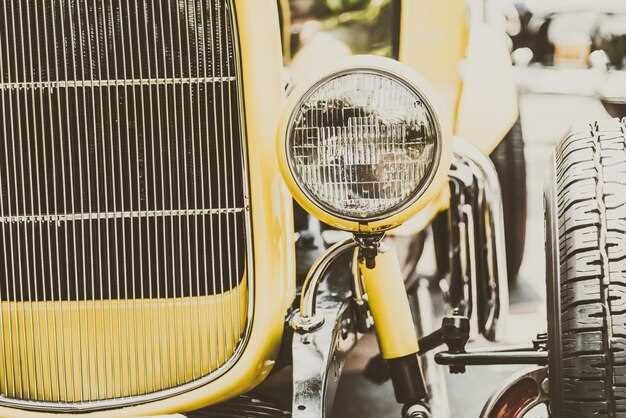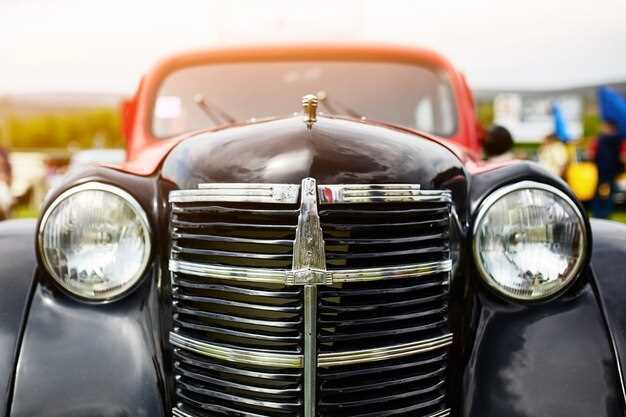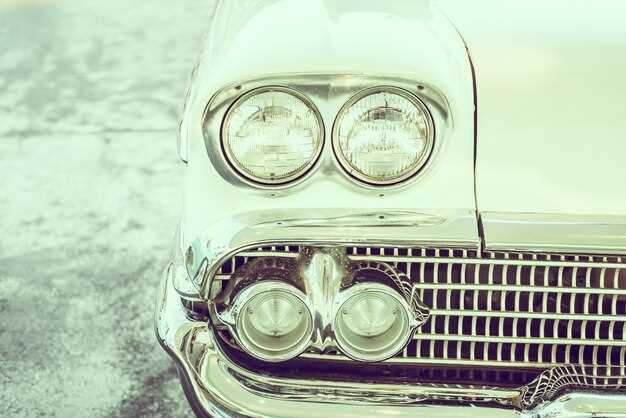
Classic cars evoke a sense of nostalgia and passion for automotive enthusiasts. However, many vintage models come with outdated clutch and transmission systems that can hinder performance and driving pleasure. Upgrading these components is crucial for enhancing the overall driving experience, improving reliability, and increasing vehicle performance. This article explores various options available for upgrading the clutch and transmission in classic cars, providing valuable insights for owners looking to modernize their vehicles.
When considering upgrades, it’s essential to weigh the options based on the specific needs of your classic car, your driving style, and your performance goals. Aftermarket clutches offer a range of choices from high-performance racing models to street-friendly combinations that maintain a smooth driving experience. Each type has its own benefits, including improved pedal feel, enhanced grip, and increased durability under power. Furthermore, the right clutch can significantly affect shift quality and overall engine responsiveness.
In addition to clutch upgrades, the transmission plays a pivotal role in the performance of classic vehicles. Modernizing to a manual or automatic transmission with improved gear ratios can enhance both acceleration and fuel efficiency. Options such as 5-speed conversions or overdrive transmissions allow for better highway cruising capabilities while reducing engine strain. By investing in quality upgrades, classic car owners can ensure that their beloved vehicles meet modern performance standards without sacrificing their classic charm.
Identifying the Right Clutch Type for Your Classic Car

Choosing the correct clutch type for your classic car is crucial for optimal performance and longevity. The clutch plays a significant role in connecting the engine to the transmission, allowing for smooth gear shifts. The two main types of clutches are diaphragm clutches and coil spring clutches. Each has its own characteristics and suitability, depending on your driving style and the specific model of your classic car.
Diaphragm clutches are favored for their compact design and ability to apply greater force with less pedal effort. They provide a smooth engagement and are less prone to wear and overheating, making them an excellent choice for daily drivers or those who prioritize reliability. However, they may not be as effective in high-performance applications where quick engagement is necessary.
Coil spring clutches, on the other hand, are a traditional option that many classic car enthusiasts prefer for authenticity. They tend to engage more abruptly, which can be advantageous for performance driving. However, this type may require more pedal force and can wear out more quickly with aggressive driving. Assessing your driving habits and expectations can help determine if a coil spring clutch fits your needs.
Another key factor to consider is the clutch size. Classic cars often come with specific size requirements based on the transmission and engine configuration. A larger clutch typically provides more surface area for engagement, resulting in better torque handling capabilities. Ensure you choose a clutch that matches not only the size but also the specifications of your vehicle to avoid compatibility issues.
Material composition is another important consideration. Organic clutches are generally smooth and quiet, suitable for everyday driving. Metallic clutches, including sintered materials, offer greater durability and heat resistance, making them ideal for high-performance scenarios but may result in increased noise and harsher engagement.
Finally, consult your vehicle’s manual or a specialist to gain insights into the recommended clutch type for your classic car model. An informed decision will lead to better driving experiences, enhance vehicle performance, and prolong the life of both the clutch and the transmission system.
Choosing Between Manual and Automatic Transmission Upgrades

When considering an upgrade for your classic car’s transmission, one of the first decisions to make is between manual and automatic options. Each type has its own unique benefits and drawbacks that cater to different driving experiences and preferences.
Manual Transmissions typically offer a more engaging driving experience. Enthusiasts often prefer manual systems for their ability to provide greater control over power delivery and driving dynamics. With a manual, drivers can optimize engine performance and tailor their driving style to various conditions. Additionally, manual transmissions are often lighter and can be simpler in design, potentially leading to lower maintenance costs in the long run.
However, the learning curve can be steep for those unaccustomed to driving stick. Frequent stop-and-go traffic can become cumbersome, making a manual transmission less favorable for daily drivers. Furthermore, available upgrade options may be limited depending on the vehicle’s make and model.
On the other hand, Automatic Transmissions offer convenience and ease of use. They allow drivers to focus more on the road rather than shifting gears. Modern automatic systems have become increasingly sophisticated, with features such as adaptive learning and sport modes, providing performance akin to manuals in some scenarios. For those who prioritize comfort and smooth driving, especially in urban environments, automatics are usually the better choice.
However, automatic upgrades can be more complex and costly, requiring additional components such as torque converters and electronic control units. Moreover, they may be perceived as less engaging by purists who cherish the tactile feedback of a manual transmission.
Ultimately, the decision should align with your driving style, intended use, and personal preferences. Test-driving models with both transmission types can also help clarify which option suits you best. If you appreciate the craftsmanship of classic cars and are looking for a truly immersive experience, a manual upgrade might be the way to go. Conversely, if you value comfort and ease, an automatic upgrade will likely meet your needs.
Evaluating Performance Parts for Improved Durability and Response
When upgrading classic car clutches and transmissions, evaluating performance parts is critical to enhance both durability and response. The right components not only improve the driving experience but also extend the lifespan of the transmission system. Key factors to consider include material quality, design differences, and compatibility with existing parts.
High-performance clutches made from advanced materials such as Kevlar or ceramic can significantly enhance durability. These materials resist slippage and heat better than traditional organic compounds, resulting in less wear over time. Additionally, they provide a firmer grip, ensuring better power transfer from the engine to the wheels, which is essential for sporty driving and increased horsepower applications.
Upgrading to a performance-oriented flywheel can also impact response times. Lightweight flywheels reduce rotational mass, allowing the engine to accelerate more quickly and improve throttle response. This modification is especially beneficial in performance builds where rapid acceleration is a priority. It’s important, however, to balance the flywheel properly to avoid potential vibrations that could harm the transmission system.
Another consideration is the shift mechanism. Short-throw shifters can reduce shift times and effort, enhancing the driving experience. These components have a more direct connection between the gear lever and the transmission, allowing for quicker gear changes, which is advantageous in racing or spirited driving scenarios.
Moreover, evaluating the overall gear ratios is essential when upgrading a classic car’s transmission. Performance transmissions may offer different gear ratios that optimize engine output at various speeds, improving acceleration and responsiveness. Ensuring compatibility with the engine’s power band is vital to take full advantage of the new setup.
Finally, consider the transmission’s cooling system. Upgraded oil coolers or performance synthetic fluids can enhance operating temperatures and reduce wear during high-stress situations. Maintaining optimal temperature levels ensures that the clutch and transmission components perform at their best, minimizing the risk of failure.
In conclusion, meticulous evaluation of performance parts is fundamental for improving both durability and response in classic car clutches and transmissions. Focusing on high-quality materials, optimal design, compatibility, and effective cooling solutions can lead to a transformed driving experience that meets modern performance standards while maintaining the charm of a classic vehicle.
